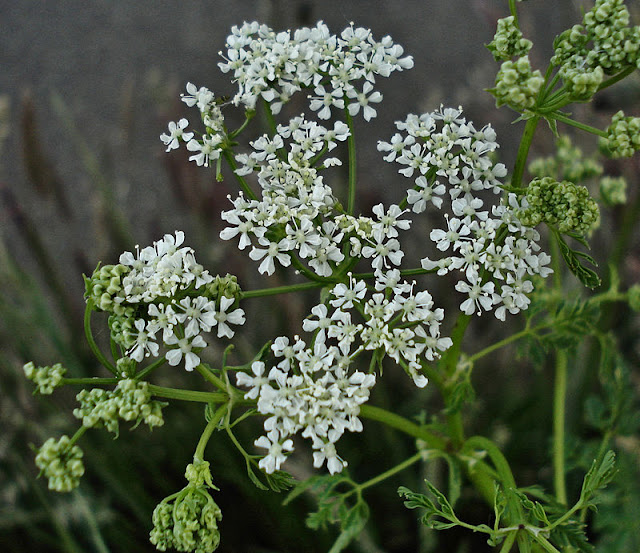Skip to main content
Dunes Bloom
Poison hemlock is native to Europe and Northern Africa, but has been introduced and spread to North America, Asia, and Australia. It is invasive in 12 states. It is generally in bloom from April to September; it has small white flowers that grow in clusters. The hollow stem is usually smooth and green with red or purple streaks and spots on the lower part of the stem. The leaves and roots emit an unpleasant smell when crushed.
Hemlock is poisonous to animals and humans if it is ingested; all parts of the plant are poisonous. If you’re out hiking, be sure to avoid this and other poisonous plants by staying on the trail.

This month at the Native Garden we are celebrating the an early spring flowering beauty, Salvia mellifera or Black Sage. Black sage is distinctive in being a shrub with woody stems. The flowers appear from February through July and are in compact whorls spaced two to three inches apart on the main stem and are usually a pale blue or lavender color, and rarely a pale rose color. Black sage is so named because of the dark whorls of dried flowers that remain on the stems at the end of the season.
Salvia comes from the Latin salveo, “to save” which refers to the medicinal uses of many salvias. Mellifera means “honey bearing”. Nectar gathering bees utilize this plant and it is one of the best honey plants along the California coast.Black Sage
Many kinds of animals rely on Black Sage for food. For example, wood rats store the leaves to eat during the winter. Other small mammals and some bird species, like quail, eat the tiny seeds. Because black sage has a bitter taste and strong odor, most wild mammals and livestock find the leaves and stems to be highly unpalatable.
Along with many coastal sage scrub species, black sage is susceptible to air pollution damage from sulfur dioxide and ozone. In some areas of Southern California, it is used as a biological monitor of air pollution.
The Chumash people used a strong sun tea of the leaves and stems of the plant. This was rubbed on the painful area or used to soak one’s feet. The plant contains diterpenoids, such as aethiopinone and ursolic acid, that are pain relievers.
Black sage is used extensively in native landscape gardening, restoration and erosion control. Adding Black Sage to your own garden is sure to bring butterflies and hummingbirds.





Comments